Air Conditioning Repair Service
All Temp Air Refrigeration provides commercial and residential HVAC service to central air conditioning and heating systems in the Phoenix area. We have over 50 years experience servicing A/C systems in Phoenix, Mesa, Scottsdale, Gilbert, Scottsdale, Chandler and other cities around the valley. Providing exceptional residential and commercial air conditioning repair service to customers is our main priority. All Temp Refrigeration and Heating works hard to keep cost low for our customers while delivering premium air conditioner and heater repair and installation. If new equipment becomes necessary, our state of the art air filtration / purification systems are capable of removing bio aerosols and microorganisms down to 0.1 micron such as mold spores, bacteria, and viruses. All Temp’s affordable air conditioning maintenance contracts keep your air conditioner in peak condition and get you through the harsh Phoenix climate in comfort and free from worry of a breakdown. All Temp Refrigeration and Heating is the valleys go to air conditioning sales, service, and repair company!
- Apache Junction AC Repair
- Chandler AC Repair
- Gilbert AC Repair
- Glendale AC Repair
- Mesa AC Repair
- Phoenix AC Repair
- Scottsdale AC Repair
- Tempe AC Repair
Air Conditioner Repairs
Our team of air conditioning repair gurus have years of experience with all major heating and air conditioning brands. Technicians undergo a rigorous home air conditioning troubleshoot and analysis training program to allow for quick diagnosis and repair of any air conditioning problems. Senior HVAC experts consult with technicians on difficult jobs that require an extra degree of expertise. We stand behind our repair work 100%. If one of our replacement parts fail or the system continues to experience problems related to the repair work performed, then the issue is handled at no cost to the customer.
- Refrigerant Leaks
- Bad Capacitor
- Bad Contacts
- Dirty Air Filter
- Air Duct Leaks
- Clogged A/C Drain Line
- And more
Common Problems Found With Air Conditioning Systems
The extreme temperatures in the Phoenix Arizona are can place a high demand on air conditioners. Eventually they will they will need to be repaired or serviced. Over the years we have noticed that there are certain HVAC system failures that we see and repair on a consistent basis. We cannot provide specific details on your situation without seeing it, however, we have created this guide in an effort to save some money for individuals who would like attempt their own AC repairs. If you are not comfortable preforming anything below then please call us, we have very competitive prices and will handle your issue professionally. If you are mechanically inclined and somewhat familiar with air conditioning system repairs then you may benefit by reviewing the troubleshooting list below:
Dirty Air Filter
The air filter in your air conditioner is often one of the most overlooked part of your air conditioning or heating system that you can service yourself. Home owners can forget to change the filter on a regular basis and once it starts to clog with dust and other debris it can lead to many other problems with your heating and cooling system. If your air conditioner is in constant used the air filter should be replaced once a month. New air filters typically cost between $3 to $20 depending on quality and can save you from a much more expensive air conditioning repair.
- Higher Electric Bills – Fans in the air conditioning system draw air through the filter and circulate it throughout your home. When debris builds on the filter, air flow becomes restricted and causes the fan motor to work harder. If you are seeing power bills from the electric company that look higher than usual check your A/C filter for build up.
- Insufficient or Slow Cooling – When the filtration system in your air conditioner is neglected dirt can collect on the evaporator coil. This coil’s job is to chill the air that flow through it. In this way dirty air filters can cause the evap coil to loose efficiency. Your air conditioning system will have to run for longer periods to cool your home to the desired temperature.
- Air Conditioning System Overheating – A dirty air can place a higher demand on your air conditioning system. A clogged air filter can cause the A/C system to overheat. Most A/C systems on the market today have a thermal overload sensor. The sensor causes the compressor to shut off to avoid a catastrophic failure. This will prevent your system from cooling until the temperature has returned to a save level. Over time this stress can damage the components in your air conditioning system.
- Evaporator Coil Iced Up – The evaporator coil is what cools the air and during normal operation it gets cold. The low temperature causes moisture from the air to build on the coil. Air flow through the evaporator coil removes the buildup of moisture. Restrictions due to a blocked air filter can cause the moisture to turn into ice. This will block more air flow. Cooling is further reduced and more ice will build. If this happens, replace the air filter and give the evap coil a few hours to thaw before running the air conditioner.
Bad AC Contactor Or Relay
The thermostat sends a signal to the air conditioner’s control board for heating or cooling. The board then closes the contactor to power the compressor and condenser fan. After the thermostat senses that the correct temperature has been reached power to the contactor is removed. This causes the air conditioning system to shut off. It is important to remove power to the system before working on this part. Before repair flip the circuit breaker or pull the fuses that power your A/C unit. Take a picture or mark the location of the wires before swapping your old contactor for a new one.
- Air Conditioner Will Not Run – The first step is to verify that power (usually 24 VAC but can be 110 VAC or 220 VAC) is received by the contactor when the thermostat tries to activate the system. If the contactor has shorted or appears visibly burnt a fuse on the control board may also be blown. After removing power measure the resistance across the contactor’s coil. You should read something close to 20 ohms. If the reading is 0 ohms then the contactor is most likely shorted. If the reading is OL or larger than 20 ohms then the contactor has an open coil.
- Air Conditioner Will Not Turn Off – High voltage and current that run through the contactor cause small sparks every time it is cycled on and off. This spark can cause pitting to form on the contacts and will create larger sparks. This arc of power can eventually cause the contacts to weld together and stick in the closed position. When that happens the air conditioner will continue to operate until power is removed from the system. The contactor must be replaced before more serious damage occurs.
Bad Capacitor
Blown capacitors are one of the most common problems we diagnose and repair. Capacitors are used by the air conditioning system to store electrical energy. The function of the start capacitor is to help the compressor motor and condenser fan motor in starting and running. There are also run capacitors in AC units that shift the phase of the power to motors which provides more efficient operation. Before working on the capacitor in your air conditioning system you should remove power and short the terminals of the capacitor to discharge it. A screwdriver with an insulated handle works well for this. It is normal to see a spark when shorting the terminals. Do not touch any fluid that may be leaking from the capacitor. When replacing the capacitor make sure to select one with the same micro farad and voltage rating. As a precaution it can be a good idea to replace the starting relay or contactor as it might be sticking and causing damage to the capacitor.
- A/C fan will not run – The fan in your air conditioner relies on a run capacitor to help it start operation. When this capacitor has failed sometimes a buzzing noise can be heard coming from the condensor fan’s motor. Use a small thin item such as a stick and turn the condensor fan and start it spinning. The A/C unit will run until the thermostat turns it off. Most run capacitors have a metal housing and are between 70 to 120 micro farads in capacitance.
- A/C compressor will not run – The compressor also needs a capacitor to provide a boost of power to help it start turning. The start capacitor can increase torque to the the compressor by as much as 500%.
- Troubleshooting Capacitors – Start out by performing a visual inspection of the capacitor for obvious defects. Any leaks, cracks, bulges, or corrosion are signs that the capacitor should be replaced. It is very common to see a bulge on a bad capacitor at the top where the terminal come out. Connect a capacitance meter to the capacitor’s terminals. The reading should be within 6% of the value written on your a/c system’s capacitor.
Low Refrigerant
Refrigerant is used to transfer heat between an air conditioning systems components. The refrigerant absorbs heat from air inside your home and transfers it to the outside. Cool air it then recirculated back into your home. You need an EPA certification to purchase CFC or HCFC refrigerants like R-22. Without a license you will only be able to check the refrigerant in your system and verify if it should be charged. If your air conditioning system is low on refrigerant, it is a sign that you have a leak somewhere that should be repaired.
- High Electric Bill – If your air conditioning system is low on refrigerant than it must work harder than normal to cool your home. If you have preformed a checkout of your A/C system and it appears to be OK, there is a chance that it might be low on refrigerant. The low charge could cause the system to run longer than normal and raise your power bill.
- Poor or Slow Cooling – The supply air temperature at the intake should be 15 to 20 degrees higher than the return air temperature measured at your vents. This is also know as the split temperature. If the air conditioner has been operating for 15 minutes or longer and air filter and evaporator coils are clean then low refrigerant could be the problem.
- Checking the Refrigerant Charge – Pull the fuse or use the circuit breaker to remove power from your air conditioning unit. After the unit is off connect the blue hose on your gauge to the low pressure side and the red hose to the high pressure side. If you don’t have color coded hoses on your gauge usually the left gauge is the low pressure side. Different sized connections on the end of the hose make it difficult to connect the gauge incorrectly. After powering on the A/C unit wait at least 15 minutes for the system to stabilize. The pressures on your gauge should agree with the manufacture’s recommendations on the unit. These are often found on a chart on one of the panels inside the unit. Check the temperatures by measuring the return air temperature, outside air temperature, and the temperatures of the low and high side lines where the gauges are connected to the system. If the measurements don’t match up it is best to call and we will inspect and charge your A/C system. If your air conditioner is low on refrigerant it may have a leak which should be repaired immediately before serious damage occurs.
Clogged Drain Line
When inside air is drawn across the evaporator coil inside your unit air will release moisture. This appears as condensation that forms on the evaporator coil. The system has a drain pan that is located beneath the evaporator coil to catch the water. A drain pipe is attached to the pan and empties it as it fills. When the air conditioner’s drain pipe becomes plugged or blocked it can leave no place for the water to go other than inside your home. This can cause major damage to your house and can lead to mold and weaken the walls and supports.
- Water Coming From A/C Vents – When water overflows the drain pan due to a clogged drain line it can sometimes be seen coming from the intake or the vents in your home. If you notice water in these areas check that the A/C drain line is not clogged. If not taken care of the water can destroy your home’s ceilings, walls, and floors.
- Water Leaking Through The Ceiling – A blockage in the drain line could cause water to appear on your homes ceiling, or run down interior walls. If this problem goes untreated sever damage can occur. Mold or other harmful contaminates could grow which might make you sick. Repair work must be done as soon as the water is noticed so something like this doesn’t happen.
- Stains On Interior Ceilings Or Walls – Staining or discoloration may appear on ceilings or walls before a water leak is noticed. You should inspect and repair the drain pipe before the condition gets worse.
- Stains On The Roof – The drain pipe can become disconnected from the A/C or obstructed in a way that causes water to flow onto the roof. If the blockage is not cleared then algae could grow on your roof. Damage to roofing materials and shingles can occur.
- How To Repair A Clogged A/C Drain Line – We find most clogs occur in the air conditioner’s P-trap which is usually located directly outside of the A/C unit. If the line is blocked check the P-trap for debris. If the P-trap looks clear then inspect the drain line for a clog. Water from a garden hose can be used to flush the drain line after it has been disconnected from the A/C system. A shop vac can also be used to suck out dirt or other debris causing the blockage. If neither of these techniques are successful then it usually isn’t very expensive to replace the entire drain system.
- How To Prevent A Clogged Drain Line – One maintenance action you can preform on the drain line is to pour 1 cup of bleach down it. This should be done once a season and it can prevent algae and other things from growing inside the line.
Air Conditioning Maintenance Plans
All Temp Refrigeration and Heating offers residential and commercial service contracts that are designed for significant savings on air conditioning maintenance and air conditioning repairs. If your air conditioner or heater experiences a problem or breakdown you will have the peace of mind knowing that our HVAC professionals are immediately available with our hassle free, air conditioning repair service. When you sign up for an air conditioning maintenance plan with us you become a high priority on our service list and we will be at your home immediately to take care of any breakdowns. With the preventative service that’s provided with our air conditioning maintenance plans your A/C system is kept in great shape by our proactive air conditioning maintenance team.
- Thorough checkout of air conditioners operational modes.
- Clean all internal and external filters.
- Clean all external condenser fans in the A/C unit.
- Check water condensate drainage lines and clear any blockages.
- Refrigerant leak check.
- Electrical system check.
Air Purification and Filtration Systems
You’ll have a healthier life style with one of our premium air filters capable of filtering particles as small as 0.1 micron on your air conditioning ventilation system. Air quality effects everyone in your home and is an important health issue. All Temp Refrigeration and Heating’s whole home indoor air quality systems reduce dust, allergens, bacteria, mold, pet dander, and other irritants by up to 99%. If someone living in the house has allergies, asthma, or other respiratory conditions our cutting edge air conditioning filter solutions are exactly what you’re looking for.

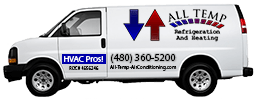
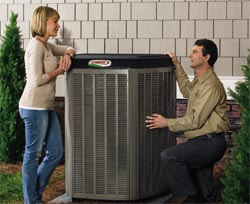
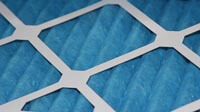
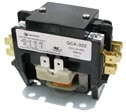
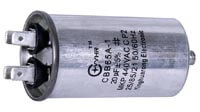
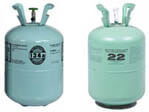
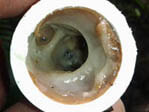
Call